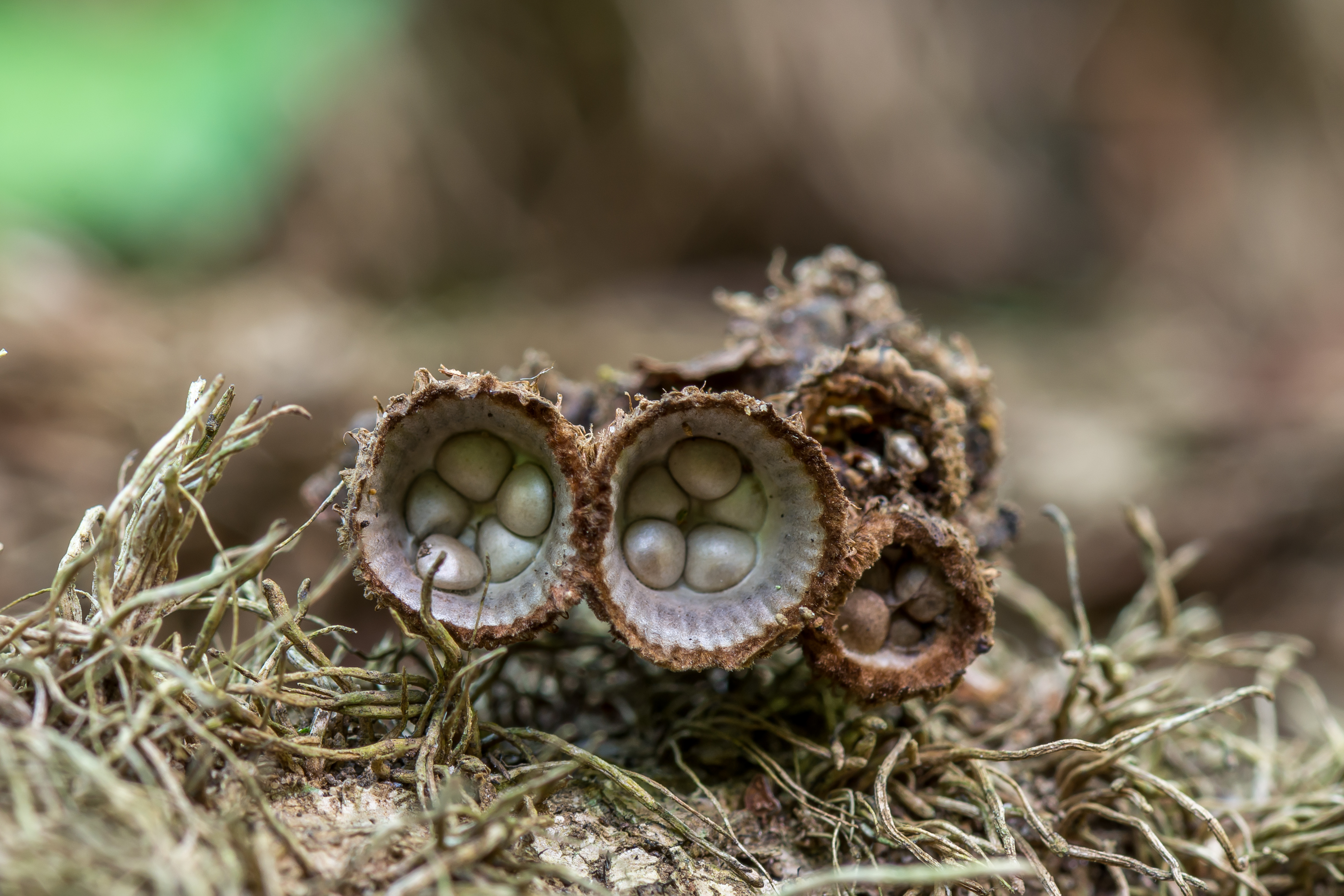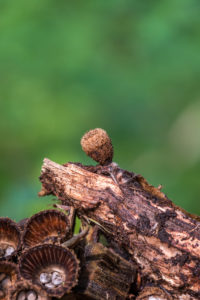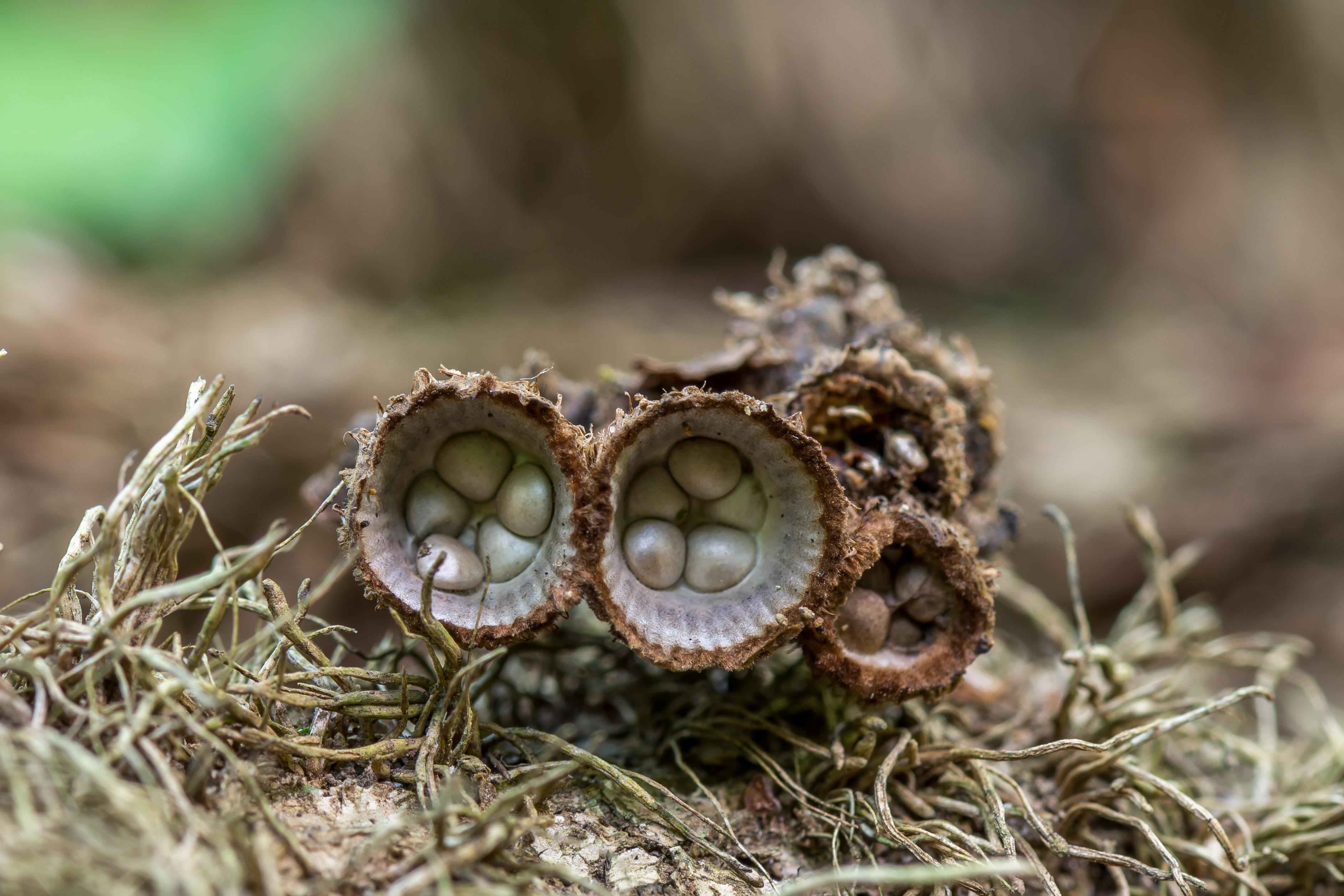All About Bird’s Nest Fungus

Soil contains excellent natural composters, and one of them is bird’s nest fungus. It falls under the Nidulariaceae family of fungi characterized by hollow, rounded, and stemless fruit bodies filled with “eggs.” The fungi look exactly like a bird’s nest with eggs in it.
These fungi are excellent decomposers that do well in woodsy and damp environments. They are commonly spotted in woody mulched paths or shady areas with vegetation. When the climate is temperate with intermediate rains, bird’s nest fungi spread through decaying matter.
During fall, you will find a group of bird’s nest fungi thriving in rotted timber, bark chips, decaying vegetation, sawdust, wood mulch, and dead tree trunks. You may also spot them on animal dung since the periodoles (“eggs” in the fungi) can get through the digestive tracts of horses and cows.
![]()
![]()
What is Bird’s Nest Fungi?
As mentioned above, bird’s nest fungi are a type of mushroom that looks precisely like the nests where birds live. They contain spherical balls that resemble eggs in cup-shaped nests that help the plant in reproduction. But how is that possible?
Bird’s nest fungi are fascinating in how they reproduce. The eggs look like shiny river stones and the correct name to call them is periodoles. They protect or house the mushroom’s spores.
When it rains, or water from irrigation hits the cup, the periodoles are thrown up to four feet away. A single raindrop exerts enough force to launch them away like cannons. Because of this unique dispersal method, bird’s nest fungi are called splash cups.
Let’s take you through exciting details of periodoles;
Each periodole has a long fine thread. The thread is joined with a sticky tail that unwinds several inches. Inches may be a surprise, but that is it.
The periodoles usually fly through the air. While flying, its code may contact either grass or twigs and rapidly wrap around them. They remain there until fully dry before splitting open to release the spores.
The spores germinate and grow into filaments called hyphae. Hyphae then grows into mycelium, which consumes the woody debris in the soil for its growth. This is why bird’s nest fungi are classified as a saprophyte (organisms that thrive on dead organic matter).
Two different strains of mycelia may fuse to form a new species of bird’s nest fungus. The resulting fungus breaks down organic waste rapidly (decomposition is faster by two-folds). Typically, the cycle takes place automatically anytime between July and October.
Bird’s nest fungi may eventually make your work easier by reducing large trunks into tiny particles that eventually decay.
Is Bird’s Nest Fungus Harmful?
Though information on the safety of bird’s nest fungi is limited, they are generally considered safe to living plants and animals. Control of these fungi is not necessary unless they pose threats to surrounding surfaces.
Otherwise, bird’s nests are fascinating organisms to watch if you come across them in your garden. If you don’t have children or pets around, you can leave them in your garden to add on manure levels.
Can You Eat Bird’s Nest Fungi?

Information on whether bird’s nests fungi are edible or not is limited, but most people consider them poisonous. This is mainly because of their size and odor. Harold J. Brodie, a Canadian mycologist, concluded in his book The Bird’s Nest Fungi of 1975 that mushrooms could not be considered human food because of their tiny size and odor.
However, some species of fungi have been used by native people in the past to enhance fertility. Another publication, Minnesota Plant Studies of 1910, also suggested that bird’s nest fungi are not edible because of their leathery texture.
Since there are other delicious mushrooms in the wild with sufficient information, you can avoid bird’s nest fungi in the meantime. But with many pieces of research underway, more publications on the fungi are expected, and maybe things will be clear.
How Do You Get Rid of Bird’s Nest Fungi?
Whether you need to get rid of bird’s nest fungi from your garden depends on the amount present. Of the many types of fungi you can find in the garden, the bird’s nest is among the most beneficial. It has high and natural composting abilities, the reason why you need to keep it around.
Another reason why you may not need to get rid of them is because they are not harmful to humans, wildlife, other living plants, or dogs. However, sometimes the “eggs” may pose some problems like sticking to surfaces, one of the reasons why you may get rid of them.
The bird’s nest fungi are difficult to remove once they stick into surfaces like houses, cars, and other structures. You can prevent them from thriving in the garden by regularly raking the soil. Another alternative is decreasing irrigation, especially in areas with a lot of shade or using living mulches. Also, use edible ground covers in the garden bed instead of wood chips.
If they have already manifested in your garden, you can remove them physically using your hands. It is good to remove them, especially when some pets or children may try eating them.
Get a pair of gloves to protect you from any probable harm the fungus may cause. It is generally safe to use a pair of gloves when working in the garden if you come across harmful substances.
After wearing your pair of gloves, place your finger at the base of the fungi, then push it back and forth until it comes out. You can also knock it off using a flicking motion at the bottom. Repeat the process until you get all the fungus off.
Dispose them off properly to prevent their spores from dispersing. Use a plastic bag to discard them in a trash can. Rotate the soil properly to prevent them from growing again.
Final Thoughts
When trying to get rid of bird’s nest fungi, avoid using fungicides because they may alter the natural processes of the ecosystem. Note that these fungi aren’t harmful to humans and other living things, so it is unnecessary to get rid of them. Do that when they pose some threats to their surroundings. More publications on bird’s nest fungi are expected to shed more light on these fantastic fungi.




